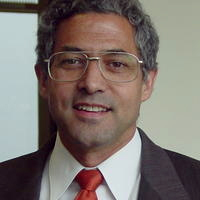Anyone who has visited southern Minnesota and Iowa recently will be aware of the huge wind resources that are in or close to our state. Iowa, 31st in population, is second in production of electricity by wind. Minnesota is 22nd in population, and eighth in wind electricity. These are very hopeful signs, but only if we can find a way to move that electricity to large population centers.
A July MinnPost article (“Projects to expand the power grid will make room for more renewable energy and less coal” by Mohamed Ibrahim) highlights the importance of adding transmission lines. Unfortunately, permitting requirements can delay such projects for a decade or more.
For those who primarily think of permitting as a way to slow down or stop fossil fuel projects, please keep in mind that it also has a negative effect on our ability to transition to clean energy. According to a Lawrence Berkeley National Lab report, more than 92% of energy generating projects currently in queue are wind and solar. Over 930 GW of zero-carbon generating capacity is currently seeking transmission access. Solar (676 GW) accounts for the largest share of generation capacity in the queues. Substantial wind (247 GW) capacity is also seeking interconnection.
Opponents of clean energy often highlight that the sun does not always shine and the wind does not always blow. One forceful answer to this would be the rapid approval of energy storage projects. Again, from the Lawrence Berkeley Lab report: 286 GW of solar hybrids (primarily solar+battery) and 19 GW of wind hybrids are currently active in the queues.
So markets are forcefully pushing the clean energy transition, while, going forward, the slow pace of permitting will slow it down.
This is not a minor issue. According to the Princeton REPEAT Project, the current rate of expansion of electric transmission (about 1% per year) is insufficient if we wish to achieve our main 2030 climate goal: reducing greenhouse gas emissions to 50% of 2005 levels. In fact, to accomplish even a 40% reduction, we will need to triple electric transmission by 2030, and this is not consistent with a 1% per year increase. In a nutshell, we can build lots of green energy production, but, without the ability to transmit it from rural building sites (with available land), this expansion of production cannot be used to retire fossil fuel power plants near urban centers.

Finally, permitting reform does NOT mean permitting abolition. We must safeguard our communities from the environmental impacts of all sorts of construction projects. The goal is to streamline the process, something too complicated to detail here. For readers who would like to see an example of a serious permitting reform bill, it’s easy to search on “Manchin’s permitting reform bill text”. The text is about setting deadlines, avoiding duplication of efforts, resolving disputes, etc.
How far we should go is, of course, open to discussion. I only argue that, in the face of particulate pollution and greenhouse gas emissions, the greater good is achieved by seeking reasonable efficiencies in the permitting process.
Scot Adams is a mathematics professor, member of Citizens’ Climate Lobby and resident of Eden Prairie.


0 Commentaires